Where I live, there’s a three-story antique mall that’s been in business for decades. One of the vendors recently tried to move some wares by announcing it was “Christmas in July”: Buy a wrapped antique and be surprised when you get home! That bit of salesmanship captures the essence of this 1940 Dodge, although there isn’t a price tag on it.
The ad itself is sparse, and the seller lists the model as “idk.” In essence, this is an estate sale car that hasn’t run in at least four years. It is known to overheat. It needs a battery and brakes. The seller is taking bids and invites you to send an instant message for more details.
In the meantime, I’ll try to fill in a few of the gaps so you can decide whether to make that next step. Basically, all 1940 Dodges were powered by the same rugged 218 cubic-inch flathead six making 87 horsepower. The transmission is a three-speed stick; unfortunately, the 1940 models missed Fluid Drive by a year (and one of these days, I’ll drive a Fluid-Drive equipped Mopar, just to see how it works). On the other hand, that may be a good thing for the sake of simplicity in your collector car.
The interior doesn’t look bad at all, although the seat cover might benefit from some professional alteration. The color combination is beautiful, but I like deep reds myself.
From a cosmetic perspective, a good cleaning might be all this Dodge really needs.
It might also be fun having the only one in town, as Dodge only produced 2100 convertibles in 1940.
Unfortunately, rarity does not always equate to desirability. In this case, nice examples at auctions seem to sell in the $20,000-$25,000 range, but there aren’t enough examples to really get a clear picture of this car’s value. Hagerty’s Valuation Tool doesn’t even list a 1940 Dodge Luxury Liner Convertible Coupe (or its D14 model designation).
This Dodge is currently for sale on Marketplace in Pennsylvania. The ad doesn’t mention how long bids will be taken, or if they’re just waiting for one that’s in their personal ballpark. I’m always a little nervous about open bidding, because if I really want the car, I don’t want to offend the seller with a low bid and shut off all avenues to negotiation. Clearly, the car will need some mechanical work (and how much is a bit of a surprise), so you’ll have to consider that when making a bid. What do you think this car is worth? Thanks to Ed for the tip on this nice-looking 1940 Dodge.
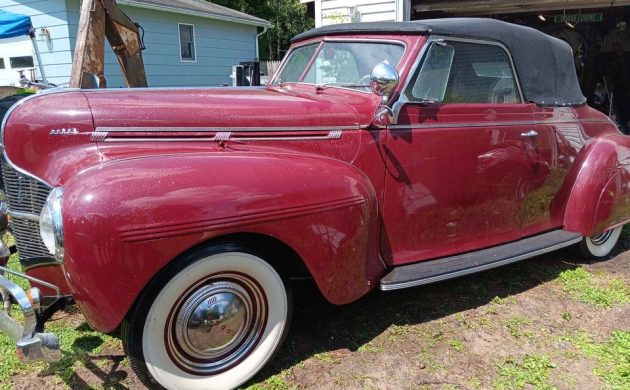
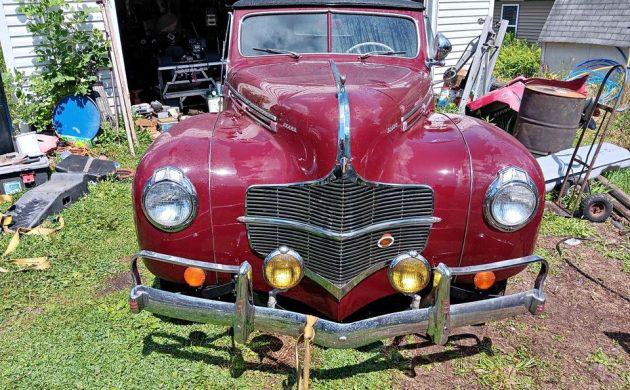
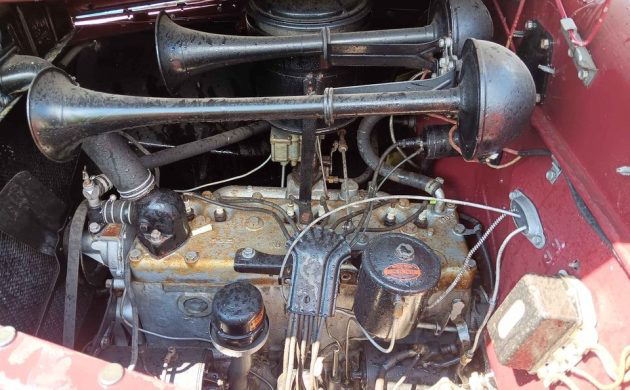

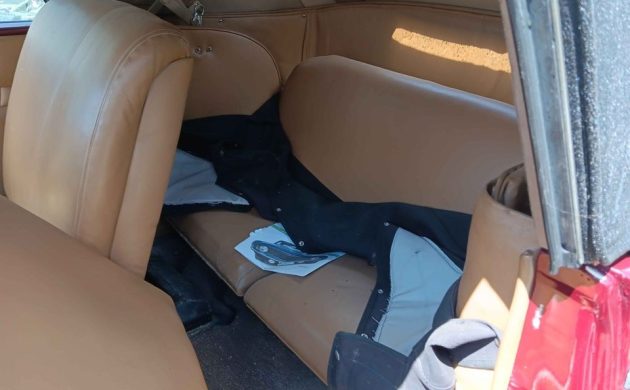

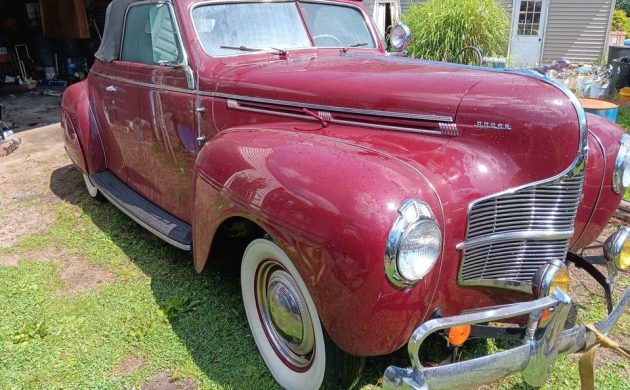
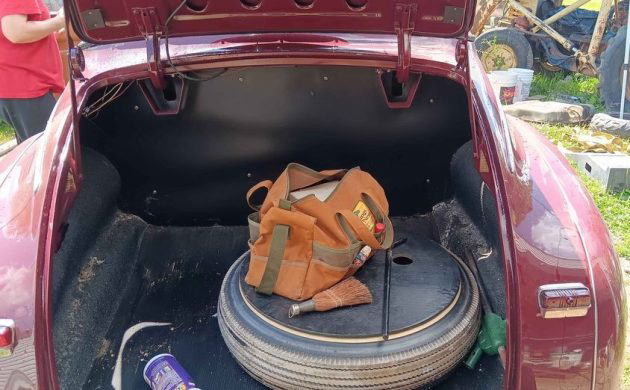

I am old enough that my peers had a few of the Fliud Drive models as first cars, yet I never drove enough of them to understand why a “semi-auto ” needed a clutch pedal. I had evolved to the whale oil cork clutch of the Hudson Hornets with Twin-H. Surprised many V-8 cars with my 3.8 rear axle and overdrive top speed. I’d give a body part to re-live being 17 again while retaining what I know now. Beautiful coach work.
“I’d give a body part to re-live being 17 again while retaining what I know now.”
Wouldn’t we all!
Looks like a nice older restoration that would not take too much to make roadworthy short of a cracked block causing the overheating. Fortunately, it’s only 20-30 minutes from me so if anybody is really interested I would go have a look for them.
Well, it certainly has horns.
Nice car! Wonder what the original seats look like, under those covers. Too many potential problems, here, for me. Funny: 1940 and 1941 Dodges were so different to each other; whilst 1940 and 1941 Plymouth cars were so similar. For SOME reason, the 1941 Plymouth autos seemed to remain common on roads, even after the 1942, ’46-’48 models had pretty much vanished as common road sights.
And they are tuned horns – upper and lower note – very pleasant!
Often overlooked, pre-war Dodges were actually pretty nice cars. Seemed after the war, everybody’s parents had that $50 Dodge beater just starting out. Even new ones had more of an economy car in mind. The mid-50s changed all that.
Normadesmond made light of the horns, and there was actually a reason for those. As speeds increased, but tires, roads and brakes did not, it was easier to have a loud horn to possibly avert a crash than to try and stop. Same mentality for a semi truck or a train. It’s a fantastic find for any of us,,,,30 years ago. Let’s face it, nobody today, or in the near future is going to take this on. The car sure is attractive enough, but not user friendly, a must today. Some enterprising dude in 20 years will buy all these classics for peanuts, convert them to whatever means is being used, and make a fortune.
Shame to see a car this nice in the middle of what looks like a recently bombed junk yard. Just don’t see many early convertibles much less one in this condition. Nice car.
Your second sentence got my attention. That was my Dad. I think it was his 2nd car (after he and his brother bought a 1925 Chrysler…I think that’s right). He bought a used (of course) 1940 Dodge 2 door and loved it…right up until he and a trolley car got together on a blind date. Fortunately he wasn’t injured but the poor Dodge was, and bought a 1948 Pontiac sedan like the one also shown on the daily email today.
Trust me Aaron, driving a Mopar with fluid drive is one of life’s experiences easily skipped.
NOTE – this car is an AACA National First Place “Senior” Car from the badge on the grill – that badge is dated – and on file at National HQ.
So…that being said – this car was a near perfect car when it was judged (whatever the year was) which indicates that it was a really really Nice car at “some” point. Clearly garaged and in need of a thorough “awakening” and proper detailing (both by someone who KNOWS what they are doing).
But – my point- the potential is there for a beautiful finished product of a really rare beautiful design year for Chrysler Products across the board –
Fluid Drive may be getting a bum wrap today, but imagine it’s 1941. My dad goes back to the Pontiac dealer where he bought his 1939 Pontiac to buy a 1941 model. But the dealer now sells Chryslers. He demonstrates a transmission where you move the shift lever to third gear and drive off. It was a stunning improvement to the manual shift and my dad bought a two-door Windsor sedan on the spot!
Is it just me or do the horns look bigger than the engine?
Mopar built a few different transmissions in the 40s and 50s. The “Fluid Drive” is only one step above the basic 3 speed manual we all know and love. That next step simply put a fluid coupling in front of the standard clutch. A fluid coupling is not a torque converter. No torque gain. You could put it in the forward gear of your choice, let the clutch out and just sit there idling until you stepped on the gas. You could shift gears in the normal fashion. You could come to a stop and not need to depress the clutch while just sitting.
Then there was the “Gyromatic”, Plymouth “Hidrive” and different names for the same depending what car they were in. Each of those is a story of its own. Yep I am old (80) and drove all of these back in the day.
The brass at Mopar figured they would get a jump on the competition by selling unheard of auto updates. They all ended in making Mopar 3rd in the auto industry, if there were more auto makers they might have even been 4th or 5th. They’re ideas were impossible to fix and impossible to get parts for.
Nice car! Wonder what the original seats look like, under those covers. Too many potential problems, here, for me. Funny: 1940 and 1941 Dodges were so different to each other; whilst 1940 and 1941 Plymouth cars were so similar. For SOME reason, the 1941 Plymouth autos seemed to remain common on roads, even after the 1942, ’46-’48 models had pretty much vanished as common road sights.
My mother had a 48′ Dodge 4 door, nice car with fluid drive. She loved it but the 0-60 time was about 3 minutes and 30 seconds, fine for her but otherwise totally inadequate. But you could always drive it like any other 3 on the tree, but it never was going to be a speed wagon. Nice comfortable car which would cruise at about 60 mph all day.
The overheating problem could be caused by a leaking or blown head gasket which shouldn’t be too hard to repair by a knowledgeable mechanic or DIY’er. Just a thought . . . It looks just too nice to pass up!
I don’t know exactly when OHV engines began: they reached Ford and Mercury in 1954. The previous flatheads were exceptionally smooth and quiet — so much so, that my 1946 Ford drew looks in a parking lot at slow speed, with people we wondering if my car was electric-powered! But flatheads also were infamous “boiler-makers” — they overheated easily. My ’46 had the accessory oversized truck-style radiator and electric “dynamatic” fan — all to keep it cool. Still, if you got caught in a long line behind an auto-accident or other “moving parking lot” situation on the highway on a sultry day, you had best move as you were able to, to the side of the road, shut the car off, raise the bonnet [hood], and wait-out the traffic-jam, to avoid boiling-over. The Ford V-8, as it was, had TWO water-pumps — one for each side of four cylinders — and STILL, it could steam-over so easily! My point in raising this issue (as anyone who’s owned and run an old flathead knows from experience, over-heating in these cars is GOING TO HAPPEN, unless you take specific precautions to avoid it). If this ’40 Dodge has a flathead, this could be the problem, especially for an owner not used to this complication. FLUSH THE RUST AND MINERAL DEPOSITS OUT OF THE RADIATOR AND WATER-JACKETS REGULARLY!!! There might be nothing wrong with the motor.
“I don’t know exactly when OHV engines began”
Buick had an overhead valve engine in 1904.
A friend owned a ’48 Dodge with the flathead 6 engine and Fluid Drive. Put it in 3rd gear, dump the clutch and you could almost walk faster than it could take off.
To Gil Davis Tercenio: Thanks for the 1904 OHV information! Can always learn!!! I have driven a number of “vintage” cars — but never a Mopar with Fluid Drive, so I cannot comment on that. I remember some people calling the Buick Dynaflow automatic, “Dyna-slush”. There certainly were lots of ’48 Dodges around in the late 1940s through the 1950s — so, they were popular. I used to see 1940 Dodges, but more ’41s.
My 1st car was a ’52 Buick Super, straight eight and Dynaflow. 0 to 60 was slow, but not as slow as 3rd in that Dodge.
DynaSlow was another nickname. :)
When you run an 80-year-old automobile as transportation, you need to suspend that “turn the key, start it and forget it” convenience we take for granted to-day. There are myriad oil-fittings as well as grease fittings — and you’d best MIND these!. If your generator requires one precise drop of 30-weight oil every 800 miles, according to the owner’s manual, “you’d better DID that” (to quote Justin Wilson); for if you DON’T, the BEARING is going to seise — now you need to have the generator re-built, and you’ve probably instantly “fried” the fan-belt, too. This is a 1940 car, Friends and Neighbours! In 1940, when you stopped at the filling-station, the attendant checked your fluid-levels — especially the oil — because these vehicles USED a little oil (like your power-mower and snow-blower). By the 1970s and 1980s, owners simply could run a car, and have the oil changed regularly, as well as other fluids as required. But in 1940, you were only 13 years past the Model T — each owner was also an amateur mechanic — HAD to be! Tyres had INNER TUBES — and if you got a puncture, you went flat quickly — you had to know how to change a tyre and the order in which to tighten the wheel bolts securely: your family’s very safety DEPENDED on this! It was not uncommon, when someone was not skilled in that process, to see a wheel leave a moving car and roll on ahead on its own! When was the last time that you had to change a tyre? Nowadays, you don’t even know that you have a nail in it, until two or more days later, when you notice that one of your tyres is a bit soft and needs air. Back in the day, when you hit that nail, you heard, “Psss-fsss-fsss-fsss…” and FELT the tyre going down. You pulled over to the side, and it was totally flat almost as soon as you stopped. Cars in 1940 were not just transportation — they were ONGOING PROJECTS! And now add 84 years of time-induced deterioration to that. Old cars are something of a HOBBY to run! (smile) Isn’t that a part of the FUN? I guess people put in modern drive-trains and suspensions, because they don’t want to fuss with motoring 1940-style — they simply want the LOOK of a vintage vehicle. If you are 91 and your wife is 87, you don’t expect her to look 20: YOU sure don’t (who IS that withered old man in the mirror, anyway?).